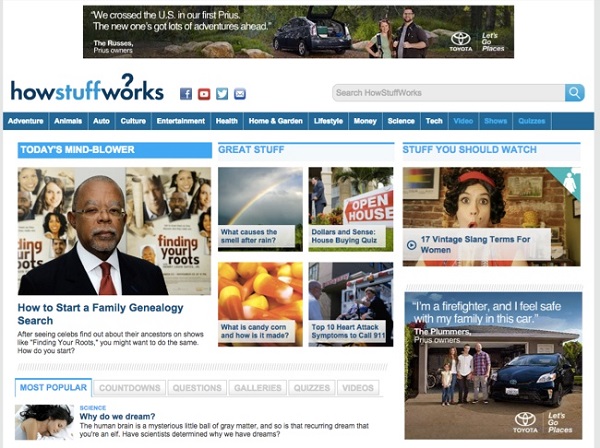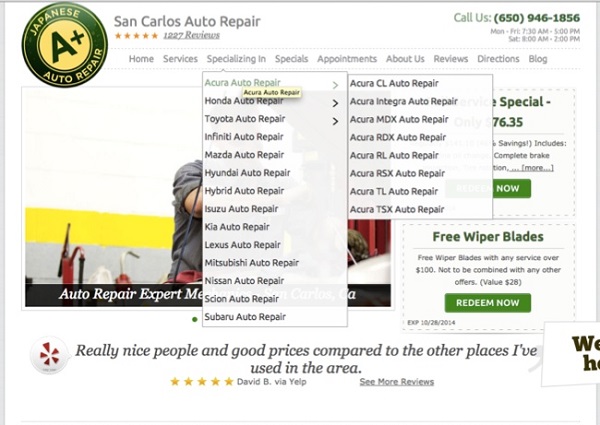How Google’s Latest “Panda” Algorithm Should Change Your Content Strategy
Columnist Jim Yu explores sites that were positively and negatively impacted by Panda 4.1, providing insights for content marketers who want to do well in search.
Panda “4.1” — another iteration of Google’s algorithm aimed at low-quality web content — hit on September 25, and some brands saw upward of a 90 percent loss in their organic search footprint, according to initial research conducted at BrightEdge.
In this post, we’ll go over the latest Panda iteration, and what it could mean for your website’s content strategy based on findings on which sites were impacted positively and negatively.
How Is Panda 4.1 Different Than Before?
Although Google closely guards its algorithmic secrets, here’s what we know about Panda historically, based on what Google representatives have said about it and on other data analyses shared amongst the web marketing community:
- Panda targets “thin” content on sites, which often equates to a general lack of content
- Panda targets duplicate content, usually when a site has a large volume of it
- Panda targets machine-generated content (what marketers often refer to as “spun content”)
- Google said it would no longer be announcing Panda iterations, as it would be incorporated into the regular indexing process
- Google said it was working on a “softer” Panda that would help small websites and businesses do better in the Google search results
So, why did Google announce this Panda rollout if it said it wasn’t going to announce any more iterations?
According to an announcement on Google+ by Googler Pierre Far, something about the algorithm had changed.
[blockquote cite=”Pierre Far, Google Webmaster Trends Analyst”]Based on user (and webmaster!) feedback, we’ve been able to discover a few more signals to help Panda identify low-quality content more precisely. This results in a greater diversity of high-quality small- and medium-sized sites ranking higher, which is nice.[/blockquote]
Could this be referring to the “softer” Panda Google spoke about back in March?
Google hasn’t opened up on the specifics, but based on initial findings from others around the web and at BrightEdge, we can share data on what types of sites have been impacted positively and negatively. Let’s do that now.
How Panda 4.1 Impacted Brands Online
Over at G-Squared Interactive, Glenn Gabe wrote about the impact Panda 4.1 had on affiliate sites, which may not come as a surprise to most — but what is a surprise, as Gabe pointed out, was that some of those sites were still standing today after all the iterations Panda had gone through in the past.
From his post:
I analyzed a number of affiliate websites that got destroyed during Panda 4.1. Now, I’ve seen affiliate marketers get pummeled for a long time based on previous Panda updates, so it’s interesting that some affiliate sites that have been around for a while just got hit by Panda 4.1. Some sites I analyzed have been around since 2012 and just got hit now.
For example, there were sites with very thin content ranking for competitive keywords while their primary purpose was driving users to partner websites (like Amazon and other ecommerce sites). The landing pages only held a small paragraph up top and then listed affiliate links to Amazon (or other partner websites).
Gabe’s initial analysis highlighted some of the tactics that could have triggered Panda this time around, which included:
- Affiliate sites without useful information that were essentially gateways to others sites
- Content on the page was not the first thing a user encountered, rather it was a list of affiliate links first
- Top organic listings that featured broken or blank pages upon clicking through
- Keyword stuffing, doorway pages, deceptive content, security warnings, pop-up ads, forced downloads
- “Content farms” like sites that had a lot of how-to type articles that were weak in depth
In BrightEdge’s analysis, we saw some of these same types of tactics as patterns for what may have triggered Panda 4.1 in certain industry verticals. BrightEdge tracks a large set of data through our Data Cube technology, and we took a deep dive into a set of industry verticals to see if we could identify patterns resulting from Panda 4.1.
Keep in mind as I’m sharing this data that we’re not stating these sites intentionally did anything wrong or that they were “bad” in nature, but the importance of sharing specific examples is so that marketers can study and learn from the impact — and go make positive improvements to their own sites.
Informational Sites
One vertical that seemed to be impacted was the broad informational site. Websites with a lot of general information on a variety of topics were negatively impacted.
Would you say Answers.com and HowStuffWorks.com were content farms? Some may argue that point, but they were among the type of sites that were negatively impacted in BrightEdge’s early analysis.
With this type of site, results may vary, and the quality of the content is not always uniform. Plus, these sites have to compete against the niche content sites that are likely to answer the searcher’s query better.
And speaking of niche content, we saw sites with niche content surface favorably after Panda 4.1. Sites that focused on a specific type of content, like OrganicGardening.com, came out on top:
Some of the takeaways here (and those who have been doing web marketing for a while would say this comes as no surprise):
- Sites that specialize in a theme or topic and that provide a rich-information experience for users are considered authoritative for that subject matter
- Sites that spread their themes too thin and only offer a little bit of information on all topics can be deemed low quality
Local Business Sites
Panda 4.1 seemed to have an impact on the local business vertical as well. Two examples of local business websites that were impacted were both in the service industry — one that specializes in Japanese auto repair, and one that specializes in TV and appliance repair.
The site that did well — APlusJapaneseAutoRepair.com — was content-rich, and appeared to be intentionally (and heavily) optimized around specific topics:
The site that did not fare well — NortechElectronics.com — was thin in content overall:
Some of the takeaways here include:
- Businesses that focus on providing a content-rich experience around the services and topics that their target audience cares about enhance the website experience. Basic on-page SEO and website structure can go a long way, too.
- Even a local business that may be ahead of the game just by having a website is subject to Panda due, in part presumably, to the fact that they have very little to keep users engaged on the site (beyond basic contact information and simple trust signals).
It’s interesting to note other verticals that were impacted by Panda 4.1. You can poke around the following sites and play “quality detective” yourself, although it’s not always outright obvious the differences:
Government
- FTC.gov (negatively impacted)
- SEC.gov (positively impacted)
Education
- EverestCollege.edu (negatively impacted)
- OgleSchool.edu (positively impacted)
Education Directory
- GradSchools.com (negatively impacted)
- TheBestSchools.org (positively impacted)
How Panda 4.1 Changes Your Content Performance Strategy
First, algorithms do not exist in a bubble — so don’t forget that your website’s content in its entirety creates the user experience. At the end of the day, there are all sorts of signals — more than 200 –– that impact the ranking of a website.
In our analysis of sites that were impacted by Panda 4.1, we noted other things that could have been negatively impacting the user experience.
For example, ads above the fold (remember the top-heavy, page-layout algorithm?), and image-to-text ratio (which demonstrates thin content but could also pose problems for mobile users and impact page speed).
To get an understanding of what Google deems as a quality experience, check out its search quality evaluation guide (Version 1, 2012), which is used by people hired by Google to evaluate the quality of sites. This feedback is used when engineers are testing new algorithm updates, for example.
How does your site stack up against some of the criteria featured within that Google document?
To get a grip on the quality of your content and the experience your brand is creating site-wide:
- Quality: Start with your most important pages — high-traffic, high-value web pages — and begin evaluating them against a set of criteria. Think about the set of criteria that Panda uses to evaluate sites (what we do know) along with the set of criteria that comes up often in the Google search quality guide.
- User Experience: Prioritize the content development and user experience improvements needed (of course, you can use tools like Google Analytics for data that can help you prioritize next steps). When evaluating pages, think about the purpose of the page or set of pages, and create an approach to making those deliver on their promise.
- Optimize Every Page: Do the same for the second- and third-tier types of pages on your site until the entire site has been evaluated, and action items have been assigned to each tier and type of page.
The great thing about Panda overall is that it’s elevating the quality of the search results on Google. And, websites can see improvements in ranking when the algorithm refreshes after they’ve taken steps to improve their content and user experience.
Ultimately, the changes you make to align your website content with Panda will catapult your website from just having content to having content that performs. I call this “content performance marketing.”
As search, content and experience are one in the same, keeping pace with algorithmic changes by understanding the “why” behind them helps us all align strategy, and better optimize and measure the performance of our content and the experience it creates.
Contributing authors are invited to create content for MarTech and are chosen for their expertise and contribution to the martech community. Our contributors work under the oversight of the editorial staff and contributions are checked for quality and relevance to our readers. The opinions they express are their own.
Related stories
New on MarTech




